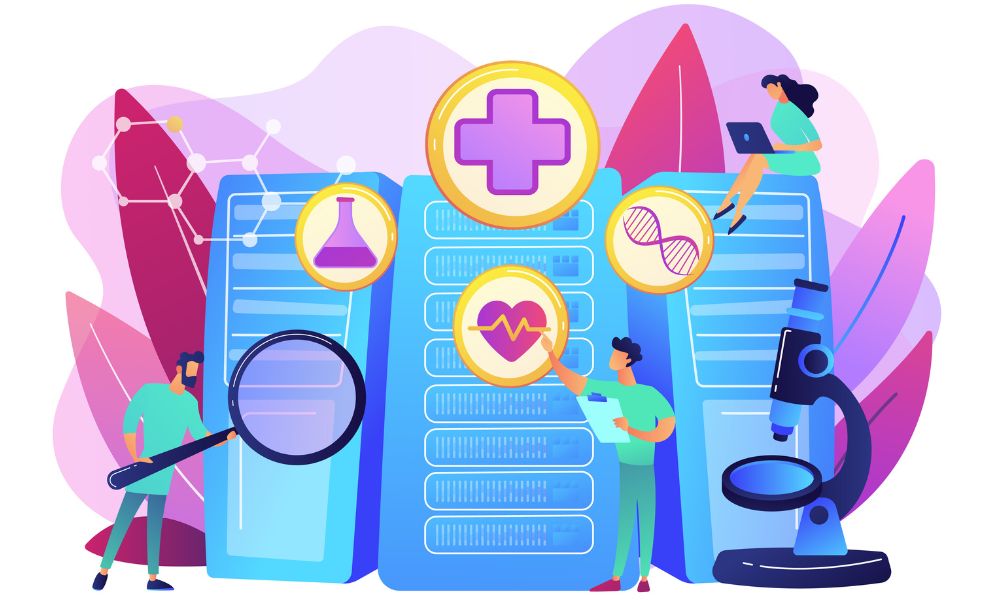Hello there,
Let’s talk about healthcare, a domain where we constantly strive to balance between state-of-the-art care provision and patient safety. It’s no secret that the healthcare sector is a complex and challenging environment, where the slightest of errors can have profound consequences. Today, I’m setting the spotlight on the innovative risk management tools in healthcare that are driving patient safety forward. Visit us here for more insights: “Safe Qual“.
Now, you might ask, why all this focus on risk management in healthcare? Well, simply put, it’s because we care. We care about the well-being of each patient, the integrity of our healthcare system, and the overall betterment of our society. And when it comes to expressing this care, clinical risk management tools play a pivotal role. So, keep learning with me as I take you through the intricacies of clinical risk management and the novel tools that are reshaping the way we manage risks in healthcare.
Understanding Risk Management in Healthcare
In the simplest terms, clinical risk management is the application of special procedures and methods to prevent, minimize, and manage risks that can harm patients’ safety during healthcare provision. Think of it as the system in place to foresee potential pitfalls and difficulties that could jeopardize the health and well-being of patients, and devise strategies to counteract them.
Risk management is crucial in healthcare for a variety of reasons.
- Firstly, it directly impacts the quality of patient care. By identifying potential risks, healthcare providers can mitigate them, leading to fewer adverse events. This not only improves patient outcomes but also boosts the level of patient satisfaction.
- Secondly, it contributes to the efficient use of resources. With effective risk management, healthcare organizations can prevent costly mishaps, ensuring resources are utilized in the best possible way to provide high-quality care.
- Thirdly, it protects healthcare providers from legal and financial repercussions that can occur due to clinical errors.
Now that we have a clear understanding of what clinical risk management is and why it’s a crucial part of healthcare, we’re ready to explore how the landscape of risk management has evolved over the years, and how innovative risk management tools are helping healthcare professionals to provide safer care to their patients.
The Evolution of Risk Management Tools in Healthcare
To appreciate the journey of healthcare risk management, we need to take a glimpse at its past. Traditionally, risk management relied heavily on manual practices: paper-based reporting systems, face-to-face meetings, and time-consuming reviews of medical records. While these methods had their merits, they were often tedious, prone to human error, and lacked the ability to quickly respond to potential risks.
As with many other sectors, the technological revolution did not leave healthcare untouched. The advent of technology heralded a paradigm shift, leading to the evolution of risk management tools. Over time, the field has shifted from being reactive – only responding to adverse events – to proactive – anticipating and mitigating potential risks.
The emergence of innovative risk management tools has transformed the landscape of healthcare risk management. The integration of artificial intelligence, big data, and predictive analytics, among other advanced technologies, has allowed healthcare providers to gain insights into potential risks faster and more accurately. These tools provide real-time data, automate routine tasks, facilitate communication, and most importantly, enhance patient safety.
But you might wonder, how exactly are these innovative tools helping to ensure patient safety? Let’s discuss this below.
- One key player in the field of risk management tools in healthcare is Artificial Intelligence (AI). AI has the ability to sort through vast amounts of data quickly and accurately. It can identify patterns and predict potential risks that may otherwise be missed. AI systems can help healthcare providers make informed decisions by offering insights into patient health trends, drug interactions, and potential complications.
- Next in line are predictive analytics tools. These are essentially statistical techniques that analyze current and historical data to make predictions about the future. In the realm of healthcare, predictive analytics can forecast patient health risks and help clinicians intervene earlier. This way, we can prevent adverse events even before they occur, enhancing overall patient safety.
- Another great tool is telemedicine. Though primarily seen as a method to provide healthcare services remotely, telemedicine has enormous potential in risk management. It allows for continuous monitoring of patients, helping clinicians to quickly identify and manage any health risks. Moreover, it reduces the risk of infections and other complications associated with hospital stays.
- Lastly, Electronic Health Records (EHRs) have revolutionized risk management in healthcare. They enable the efficient collection, storage, and analysis of patient health information. With EHRs, healthcare providers can readily access a patient’s comprehensive medical history, aiding in better decision-making and minimizing the risk of medical errors.
These are just a few examples of the many innovative risk management tools in healthcare. Their utilization has not only optimized the process of risk identification and mitigation but also greatly contributed to patient safety. But don’t just take my word for it. Let’s move on to some real-life examples where these tools have been successfully implemented to improve patient safety.
Examples of Innovative Risk Management
- One noteworthy instance is the implementation of AI in the Johns Hopkins Hospital system. They used a predictive analytics tool powered by AI to predict patients at risk of sepsis, a life-threatening condition. The system analyzed multiple variables in real time and alerted the healthcare team if a patient’s condition was likely to deteriorate. This early detection led to timely interventions, saving numerous lives and truly demonstrating the power of AI in risk management.
- On another front, a community hospital in rural Nebraska made a groundbreaking shift by implementing telemedicine to manage potential health risks. This allowed them to continuously monitor their chronic disease patients remotely. Any irregularities in health parameters triggered alerts to healthcare professionals who could promptly intervene. This drastically reduced hospital readmissions and enhanced the quality of life for these patients.
- Meanwhile, the Mayo Clinic, a renowned healthcare institution, leveraged the power of EHRs to enhance patient safety. They developed a sophisticated EHR system that not only recorded patients’ health information but also used predictive algorithms to identify potential risks, such as adverse drug interactions or signs of deteriorating health. This innovation dramatically improved patient safety by preventing potential adverse events.
These real-world examples give us a glimpse into the massive potential that innovative risk management tools hold in the realm of patient safety. However, like all good things, these tools come with their own set of challenges and limitations.
Challenges and Limitations of Innovative Risk Management Tools
Now, despite their remarkable advantages, these tools are not without their hurdles.
- One significant challenge is cost. Innovative risk management tools often require a substantial initial investment, which can be prohibitive for smaller healthcare organizations or those with tight budgets.
- Data privacy is another area of concern. The use of AI, predictive analytics, and EHRs involves handling large volumes of sensitive patient data. Ensuring this data remains secure and confidential is vital, yet can be challenging, given the increasing incidents of cyberattacks in healthcare.
- Resistance to change can also pose a challenge. Healthcare providers may be hesitant to adopt new technologies due to unfamiliarity or skepticism about their effectiveness. Overcoming this resistance requires continuous training and education to demonstrate the benefits of these tools and how to use them effectively.
In terms of limitations, one important thing to remember is that these tools are just that: tools. They are meant to aid healthcare providers, not replace them. No matter how advanced these technologies become, they cannot replicate human intuition, judgment, and the personal touch that forms the heart of patient care.
So, while these innovative risk management tools in healthcare hold great promise, it’s essential to navigate their challenges and limitations carefully. But don’t let these obstacles deter us. The future of risk management in healthcare is brighter than ever, and we’re about to see why.
The Future of Risk Management in Healthcare
In an industry as dynamic as healthcare, the only constant is change. The future of risk management in healthcare holds numerous exciting possibilities. With the rapid advancements in technology, the tools we discussed earlier are set to become even more sophisticated, offering even deeper insights into risk prediction and mitigation. You might like to read this: “Clinical Risk Management – Understanding Medico Perspectives“.
AI and predictive analytics, for instance, are likely to evolve to manage more complex tasks. The application of AI could expand into areas like personalized medicine, where it can help identify potential risks based on a patient’s unique genetic makeup and lifestyle factors. Predictive analytics could grow more refined, offering even more accurate forecasts of patient health risks.
Telemedicine is also likely to gain even more traction, particularly given the shift towards remote healthcare spurred by recent global events. More sophisticated remote monitoring devices could be developed, offering real-time patient data and reducing the risk of adverse health events.
Similarly, EHRs are expected to become more comprehensive and user-friendly, integrating seamlessly with other healthcare IT systems to provide a holistic view of a patient’s health, further improving decision-making and risk management.
In essence, the future of risk management in healthcare looks incredibly promising. But no matter how the tools and technologies evolve, the ultimate goal will remain the same: enhancing patient safety.
Conclusion
As we conclude this blog post today, let’s take a moment to revisit the key takeaways.
- Clinical risk management is a cornerstone of healthcare, aiming to prevent, mitigate, and manage potential risks to enhance patient safety. In recent years, the advent of innovative risk management tools in healthcare, such as AI, predictive analytics, telemedicine, and EHRs, has revolutionized the field, offering real-time data, predictive capabilities, and efficient communication.
- While the benefits are significant, we should also be mindful of the challenges and limitations that come with these innovative tools, like cost, data privacy issues, and the potential resistance to change. Yet, with the right strategies and continued commitment to patient safety, these hurdles can be navigated successfully.
- Looking ahead, the future of risk management in healthcare is promising. As technology advances, so too will our tools and techniques for managing clinical risks, constantly reshaping the healthcare landscape and driving patient safety forward.
The journey through the landscape of clinical risk management and its innovative tools has been enlightening, hasn’t it? But remember, the journey doesn’t end here. In healthcare, we’re continually learning, evolving, and improving. Together, let’s continue to explore, innovate, and ensure the highest standard of patient safety.
















